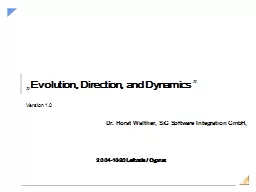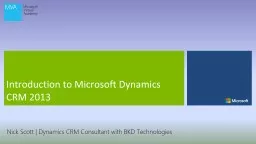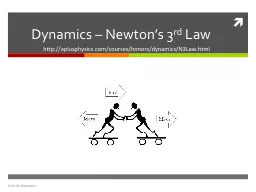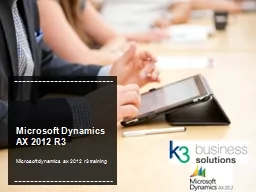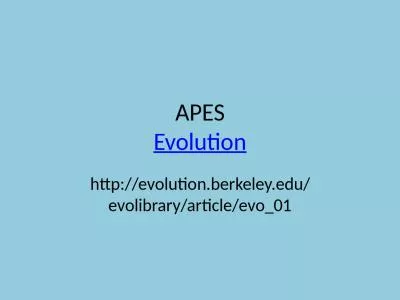PPT-„ Evolution, Direction, and Dynamics
Author : tatyana-admore | Published Date : 2020-01-23
Evolution Direction and Dynamics Version 10 20041020 Lefkosia Cyprus Dr Horst Walther SiG Software Integration GmbH Content Introduction Definition of Identity
Presentation Embed Code
Download Presentation
Download Presentation The PPT/PDF document "„ Evolution, Direction, and Dynamics" is the property of its rightful owner. Permission is granted to download and print the materials on this website for personal, non-commercial use only, and to display it on your personal computer provided you do not modify the materials and that you retain all copyright notices contained in the materials. By downloading content from our website, you accept the terms of this agreement.
„ Evolution, Direction, and Dynamics: Transcript
Download Rules Of Document
"„ Evolution, Direction, and Dynamics"The content belongs to its owner. You may download and print it for personal use, without modification, and keep all copyright notices. By downloading, you agree to these terms.
Related Documents

